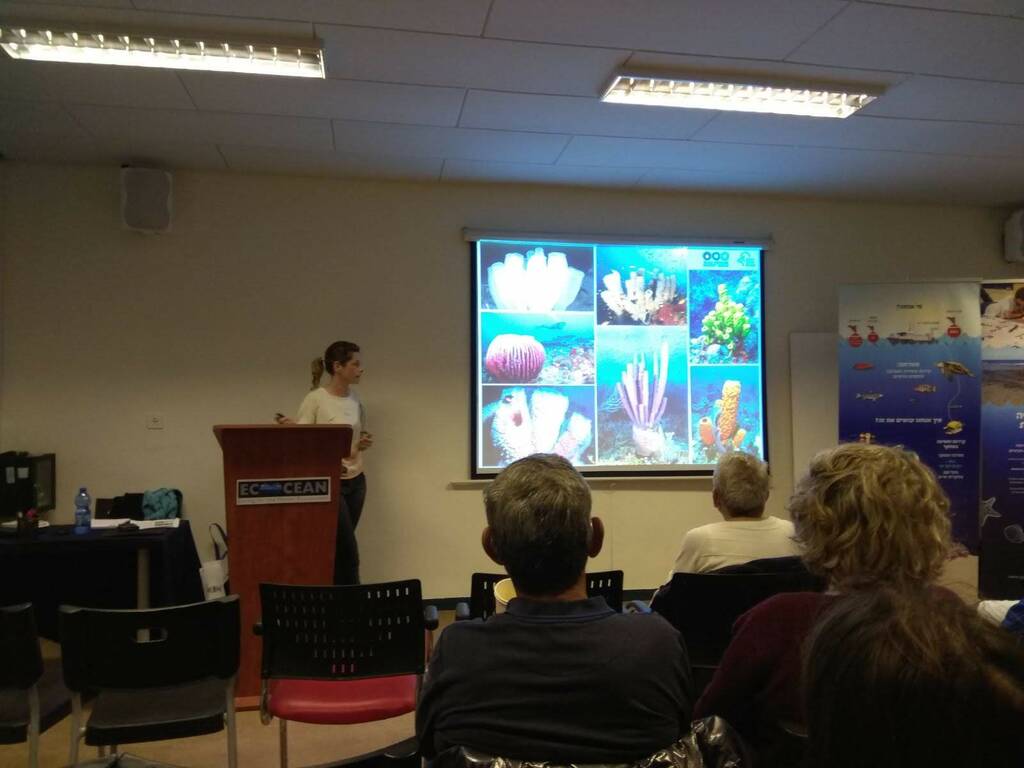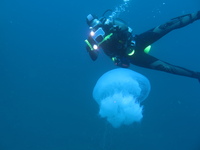Blog:
An interview with Tal Idan
2021, April 22
Posted by Pim Bongaerts
community ecology, reproduction, taxonomy, conservation, population genetics, connectivity, mesophotic sponge grounds
Early Career Scientist: Tal Idan
How do you pronounce “mesophotic” – ‘mee-so’ or ‘meh-so’ -photic?
As in french just méso-photique!
Are you more interested in charismatic megafauna or scouring the benthos for cool creatures?
I should admit that I’m mostly looking at benthos, being attracted with hidden small organisms such as trapeziid crabs hiding into corals. However, depending the locations there are some unique places where I will keep an eye into the blue in order to observe fascinating pelagic fauna.
What is your primary research interest, and how does it link with the mesophotic zone?
My primary research interest is to better understand the role and function of symbiotic communities into the coral guild-systems for resistance/resilience or rapid adaptation mechanisms facing environmental stressors. Often underestimated in its overall complexity, coral systems include synergy between the host and its network of symbiotic organisms (different compartments): Symbiodinaceae and other microorganisms as well as overlooked obligate exosymbionts (e.g. trapeziid crabs). I am mostly focusing on the dynamic responses of the symbiotic community assemblages into the coral-guild system when exposed to changing environments – i.e. consequences on the biodiversity (specialized vs. generalist communities) and associated functional traits. A better understanding of the biological limits and constraints of coral-guilds systems for the coral ecosystem resilience require holistic approaches including the coral reef continuum from shallow to mesophotic. In addition, I am fascinated with the richness of cryptic species and I have a strong interest in the exploration of ecosystem-wide patterns of scleractinian coral diversity, or other important functional groups, along the coral reef continuum from shallow to mesophotic depths.
Describe the location of your main (or most interesting) study site and how it fits in with your research questions.
So far, I have mostly studied coral reefs from the Pacific, in different regions (French Polynesia, New Caledonia and Okinawa). More recently, I started to develop a high interest for mesophotic coral reefs from the south-western Indian Ocean through non-profit associations at Mayotte and La Réunion and active actions of citizen science. I enjoy interacting with people from different horizons, scientists or citizens, and in different regions of the world as it opens a more global view of how reef system biodiversity and functioning can be heterogenous.
 Giving a lecture on conservation of mesophotic sponge grounds along the Israeli Mediterranean coast as part of a community outreach program
(C) Yonat Idan
Giving a lecture on conservation of mesophotic sponge grounds along the Israeli Mediterranean coast as part of a community outreach program
(C) Yonat Idan
What is your primary means of accessing mesophotic depths to conduct your research (e.g. ROV, SCUBA, rebreather, submersible) and what were the main challenges to overcome?
Due to constraints of French policies for scientific diving (rebreather diving is allowed since only 2 years) I used SCUBA to conduct research. However, I quickly noticed the benefit to dive with rebreather (first training in beautiful reefs of New Caledonia in 2014) and I’m now awaiting to get more experiences and opportunities to use it for conducting research. In a different way, I had several opportunities for ‘dry’ explorations of mesophotic reefs using ROVs: small and simple (a lot of fun time with the BlueROV2 in Harii’s Lab) to big and more sophisticated with sampling systems (with Okinawa Churaumi Aquarium team). While ROVs are really exciting to explore uneasy accessible reefs, it can be challenging to pilot or to use for sampling with precision and also really frustrating to see the environment from so far (especially when something you never saw before pass in front of the camera). Finally, my experiences of cooperation and sharing of science with professional technical divers also passionate for marine biology through local associative activities (active member of Deep Blue Exploration in Mayotte and Poisson Lune in La Reunion) or marine Expedition (1-year of memorable adventure with the Under The Pole team) provide unique opportunities to lead continuous observations and/or intense programs that will provide significant advances in our understanding of the MCEs as well as relevant actions of awareness.
What do you remember from your very first exposure to coral reef or mesophotic fieldwork?
While I started to explore upper mesophotic depths on my free time in the Pacific (Polynesia and New-Caledonia) or the Caribbean, my first exposure for research was in Okinawa (Japan) in 2016 with Frederic Sinniger (a precious and a trusted dive buddy during 2 years!). I remember that my first feeling to immerge into reefs characterized with ‘cold and rich water’ (everything is relative… compared with Polynesia) was combined with the pleasant feeling to have the freedom to dive in mesophotic zone for science! This first experience of leading exploratory research to collect corals at upper mesophotic depths made me realize the need for an overdeveloped organization due to the limited time at bottom, where the bottom time is running too fast while it can be freezing during decompression.
What new skill(s) have you learned during your research and what is one thing (skill, program, advice, etc.) that you wish you learned earlier in your science journey?
That’s the point, in research we never stop learning as we have to continuously face different situations whether on field or in laboratory or in result understanding/interpretation depending on the project, tool/technology advances and team. Until now, I mostly developed skills in order to reach the ability to conduct holistic and pluri-disciplinary approaches focusing on coral-guild diversity and associations in deep and shallow coral reef ecosystems: starting with ecology, molecular ecology, physiology and pursue more recently with basic bioinformatic tools and functional approaches. In fact, there are several particular experiences that I would have wished to develop since the really beginning… but the top priority would have been the opportunity to be part of interdisciplinary programs which both open the access to the challenging wide possibilities of scientific approaches (discipline, analytical tools, etc.) and make aware of the importance to apprehend science at the coral ecosystem level with local characteristics and ecological priorities that may help for conservation strategies.
How do you keep current with an endless stream of research coming out (or any favorite science website or blogs that you follow)?
Well it is, as for everyone, challenging to keep up-to-date with the massive flow of research coming out in various fields. Mix of strategies are available and can help to try to keep new incoming: social media as Twitter, alerts with key words on google scholar, journal content newsletters, conferences or exchanges with colleagues. Also, in some of the laboratories I have been, it is common practice to run ‘journal club’ or ‘scientific day’ and it was especially fruitful and of high interest to discover new fields or approaches (technics or analytical method) and maintain active and constructive discussions.
 Sea star (Hacelia attenuate) on top of the sponge Ircinia oros, 96 m depth at the Shefaim mesophotic sponge ground. Laser beams are 6.7 cm apart
(C) Tal Idan (Ilan lab, TAU)
[CC BY-NC 4.0]
Sea star (Hacelia attenuate) on top of the sponge Ircinia oros, 96 m depth at the Shefaim mesophotic sponge ground. Laser beams are 6.7 cm apart
(C) Tal Idan (Ilan lab, TAU)
[CC BY-NC 4.0]
